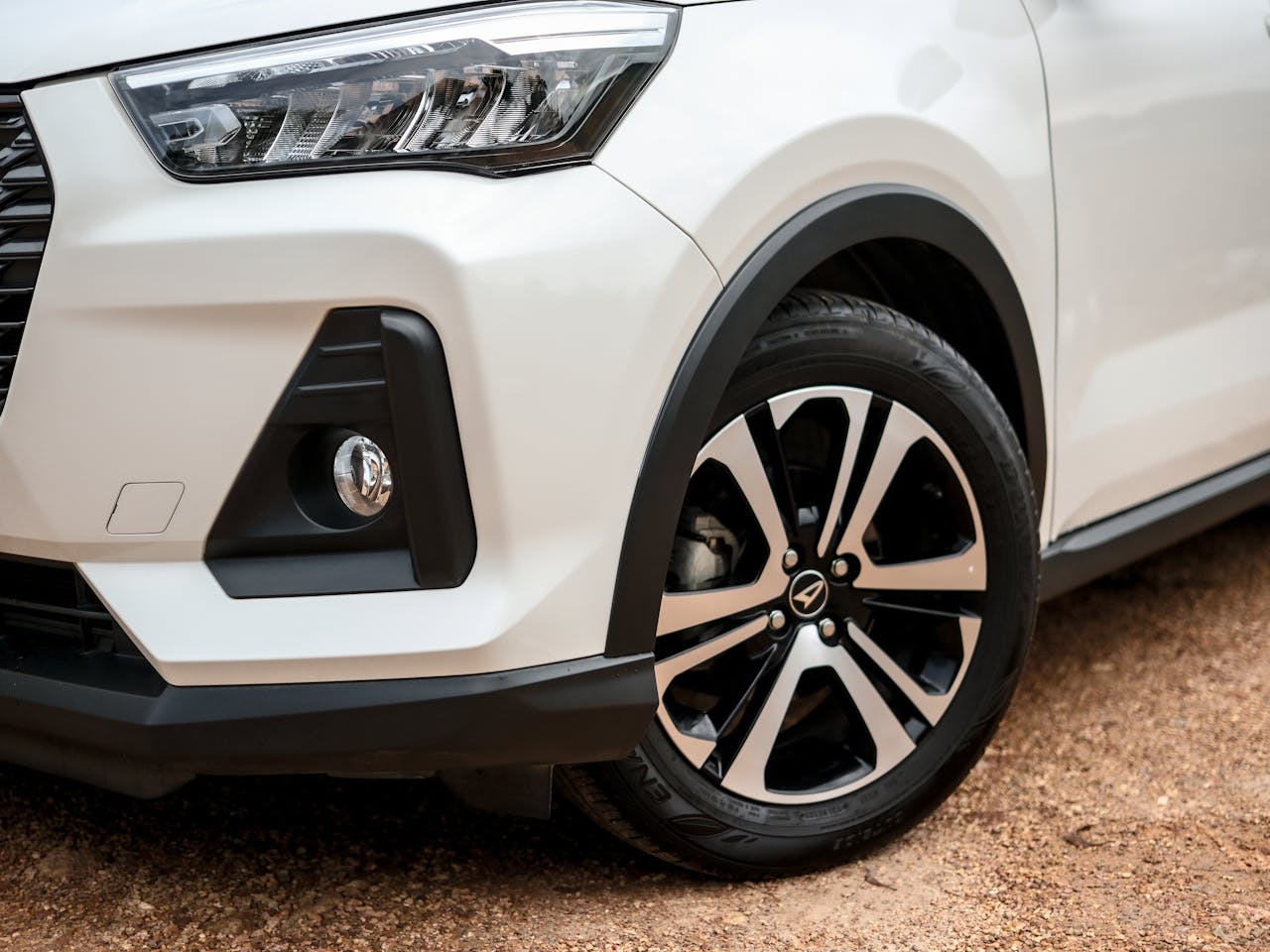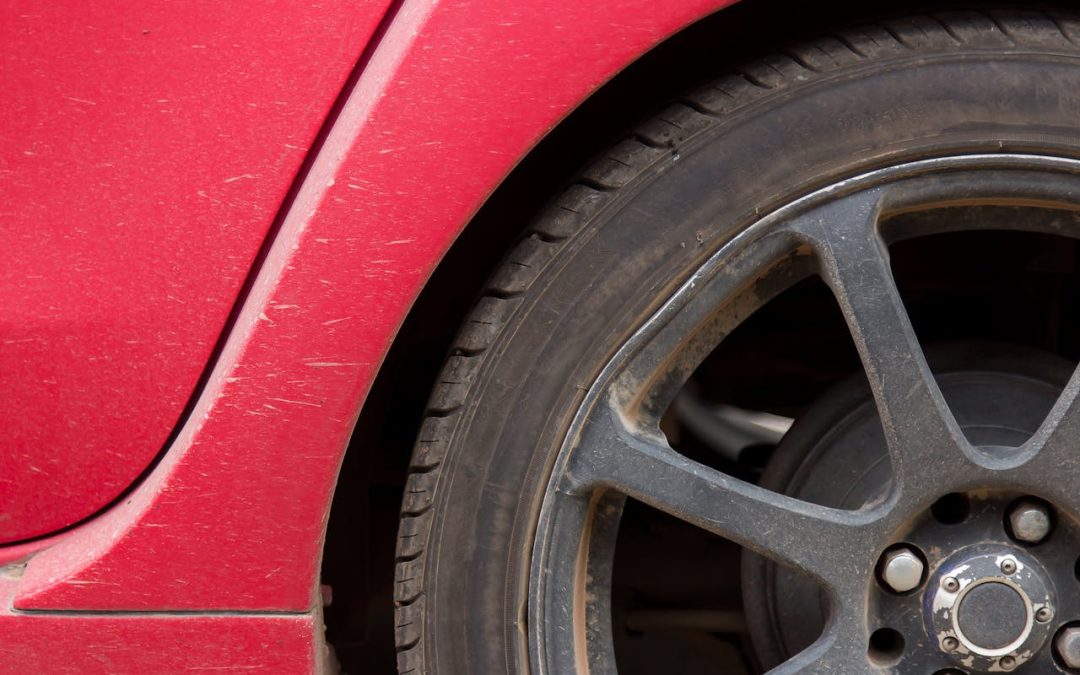Key Takeaways
- An optimal tire balance allows vehicles to perform better, provides a safer drive, and defends against uneven tire wear. You can prevent expensive repair bills by making tire balancing a regular maintenance habit.
- Tire balancing ensures that weight is evenly distributed all around the wheel assembly. This crucial process provides a smoother ride, better handling, and longer tire life. Static vs dynamic balancing. Both static and dynamic balancing methods play an important role in making this possible.
- Don’t make these rookie mistakes when balancing tires by placing weights incorrectly, not removing old weights, and not calibrating equipment. Simply by following a set of best practices, you’ll get a much more accurate, realistic picture.
- Some early signs of imbalance include steering wheel vibrations, uneven tread wear on the tire, and weird sounds at certain speeds. Take care of these right away to avoid more extensive damage.
- Follow strict guidelines, train technicians thoroughly, and invest in quality equipment to improve the accuracy of the tire balancing process. Regular maintenance and calibration are all equally critical for consistent, accurate results.
- A professional tire balancing service provides the right tools and experience that DIY methods just can’t replicate. For the highest level of precision and safety, you should seek professional assistance.
Making rookie mistakes with car tire balancing can lead to uneven wear, reduced fuel efficiency, and unnecessary stress on your vehicle. There’s a misconception among many drivers that balancing isn’t important unless you’re putting on new tires or fit the profile of a performance car driver.
In truth, improperly balanced tires will eventually create vibrations, particularly at higher speeds, and may even have a long-term effect on your vehicle’s suspension. For example, ignoring signs like steering wheel shaking or uneven tread wear might cost you more in repairs down the road.
By understanding common errors, such as neglecting regular check-ups or skipping weight adjustments during installation, you can maintain a smoother ride and extend tire life. Read on to learn how to avoid these rookie errors and ensure your car remains in top shape.
Why Proper Tire Balance Matters
Proper tire balance is important not just for vehicle performance, but vehicle safety. Proper tire balance is important because it makes sure your tires are distributing weight evenly across the wheel assembly, which helps provide a smooth ride. This proper balance will ensure not only the best handling of your car, but also goes a long way in extending the life of your tires.
Improperly balanced tires will lead to premature and uneven wear patterns. As time goes on, this irregular wear decreases the lifespan of the tire, costing you more money by needing to replace the tire more often.
Vibration problems are a very typical outcome of improper balancing. Some vehicles are particularly prone to vibrations in the range of 12 Hz – 17 Hz. Even small imbalances within this range can lead to significant vibrations.
These vibrations can severely transmit through the steering and suspension systems, not only impacting driver comfort but also affecting the vehicle’s overall handling. High-performance tires are particularly susceptible to these problems as their fragile nature requires ultra-precise balancing.
Tire imbalance may have a less obvious yet hugely detrimental impact on vehicle efficiency and safety. In addition to hazardous loss of control from tire failure, uneven wear can lead to an up to 5% reduction in fuel economy.
This rattles your vehicle’s stability and, in severe instances, causes crashes. Routine wheel balancing avoids these issues, helping you avoid expensive repairs associated with tire replacements or suspension failure. Methods such as ForceMatching with a diagnostic balancer can sometimes reveal manufacturing defects, too, although this is even rarer.
At the end of the day, tire balance means a safer, more comfortable ride and a better return on your investment in your vehicle.

Common Tire Balancing Mistakes
Tire balancing is a critical component to the overall success and performance of a vehicle, yet it can be easily ruined by rookie mistakes. By steering clear of these common mistakes, you’ll not only get the most out of those tires but enjoy a smoother, safer ride too.
Avoiding these common mistakes is the first step to a proper tire maintenance program.
Improper Weight Placement
Proper placement of wheel weights is incredibly important. Even at an inch off, misplaced weights can cause constant imbalance, irregular tire wear, and compromised handling.
Keeping the tool accurate is imperative to avoid the weights are not positioned incorrectly. For instance, overhanging weights beyond the specified area increase, rather than decrease, vibrations.
Second-hand wheel weights don’t offer the most effective balance accuracy.
Failing To Remove Old Weights
Just leaving old weights on the wheel is asking for trouble and extra work on everybody’s part! Residual weights can mess with new measurements, creating imbalance.
Cleaning the wheel surface completely under the new weights improves adhesion and minimizes mistakes. A quick-and-easy checklist should be all you need to make sure all old weights are taken off before balancing.
Skipping Equipment Calibration
The accuracy of a wheel balancer can only be guaranteed with consistent calibration. Calibration according to the manufacturer’s specifications avoids an inaccurate correction being overcorrected or undercorrected by a technician.
Ignoring this step leads to inaccurate balance corrections more times than not and can be detrimental to the performance and safety of a tire.
Using Incorrect Weight Types/Sizes
Using an incorrect size or type of weight can cause a balancing mistake. To ensure you get correct results, always use a weight profile gauge and verify the balancer’s measurement settings are correct.
Don’t leave it up to chance; be exact.
Spotting Early Signs Of Imbalance
Tire imbalance is a drama that plays out behind the scenes, creating potentially critical wear and tear that can affect how your vehicle performs. Recognizing the early signs helps address issues before they escalate. Guiding signs, such as steering wheel shaking, abnormal tire wear, strange sounds, and more, work together to assemble the important pieces of this puzzle.
Steering Wheel Vibrations
Steering wheel shaking or vibrating that won’t go away is usually a sign that your tires are out of balance. These vibrations can be exacerbated at certain speeds, especially in the 50–70 mph range. Take your vehicle on bumpy or rough surfaces, and suddenly everyone is experiencing these problems at the same time.
If the vibrations go away at lower speeds, that’s a good indicator that you have a dynamic imbalance. This might be due to lateral out-of-alignment at the flange location. Recording patterns can help determine if balancing or RFV (radial force vectoring) calculations are needed. RFV gauges the vertical runout of matched tire assemblies to identify imbalance.
Uneven Tire Wear Patterns
Related uneven tread wear is a very noticeable sign of imbalance. Utilize a tread depth gauge to measure wear evenly across all tires. For example, if there’s more wear on one side, that could be a sign of static imbalance, which is when the tire’s weight isn’t evenly balanced.
Routine check-ups help you catch problems before they get serious. With balancing methods such as ForceMatching, we reduce the number of assemblies that require a fix, improving time and performance.
Unusual Noises At Certain Speeds
In particular, warning signs of imbalance are unusual noises at certain speeds, well defined in specific ranges. In cases where assembly runout adds to the overall high road force, sounds may be indicative of the vibration.
If sounds are still occurring after installing high-end balancers such as Coats equipment, bringing in a pro helps get items aligned properly and balanced to avoid wear.
Prevent Tire Balancing Mistakes
Tire balancing requires precision and a structured approach to avoid common errors that can lead to uneven wear, vibrations, or safety concerns. Pay attention to tire balancing best practice techniques to help avoid inaccurate and unreliable results. Make technician training, equipment quality, and equipment maintenance the cornerstones of your success.
Follow Guidelines Strictly
Manufacturer’s guidelines are the bedrock of successful tire balancers. Adhering to these standards ensures adherence to key specs, such as weight distribution and proper radial force vectoring. This is very important, especially for sensitive vehicles where a 0.025-inch radial runout could create harmful issues.
Standard operating procedure reinforced by an illustrated checklist guides technicians to complete each step with no room for error. Regularly reviewing and updating these practices ensures staff stay informed about stick-on weights and other evolving requirements for modern wheels.
Train Technicians Thoroughly
The right training integrates lecture-driven theory with hands-on practice as well. Technicians must master techniques like using flange plates and collets for mounting accuracy, as well as operating advanced equipment to minimize residual imbalance.
Performance evaluations ensure standards are consistently met, while modern training materials keep teams updated on advancements like bead looseners with power controls for precision.
Schedule Regular Maintenance
Routine maintenance stops further degradation of the equipment. Tools like Grip-Max Plus clamps and balancers that identify residual imbalance must be checked for calibration, wear, and functionality to maintain performance.
Having a record of work done creates a baseline that helps spot patterns with phantom problems.
Center Wheel Correctly
A big part of avoiding a tire balancing mistake is accurate centering. Utilizing alignment tools, visual inspections, and adjustments for wheel type leads to an accurate process.
Use Flange Plates Properly
Align balancing plates and secure wheels with flange plates, making sure stacks do not misalign. Regular inspections ensure they are suitable and safe for both hub-centric and lug-centric wheel designs.
Best Practices For Tire Longevity
By taking measures to extend the lifespan of your tires, you’ll be keeping more money in your pocket and enjoying a smoother, safer ride. By implementing these best practices, you will extend tire life, maximize performance, and achieve peak fuel efficiency.
Regular Tire Rotations
Tire rotations play a key role in ensuring even tread wear across your tires. To extend the lifespan of your tires, manufacturers generally recommend you rotate your tires every 5,000 to 8,000 miles. This schedule may differ, so be sure to refer to your vehicle’s manual for detailed advice.
Rotating the tires regularly helps to prevent any one tire from having to absorb too much tension. This is critical for cars that are front wheel drive or rear wheel drive. Front tires on a front-wheel drive car have more weight on them and wear down quicker.
Rotating them to the rear counteracts this by redistributing wear. Measuring tread depth before and after rotations provides a very good indication of how well the rotation process is working. Educating drivers on the importance of tire rotations and how they impact tire life will better prepare them to stay on the rotation schedule.
Maintain Proper Tire Inflation
Correct tire pressure is critical to performance and wear. Checking tire pressure regularly, at least once a month or before taking any major trips, will make sure that you are maintaining the levels recommended by your vehicle’s manufacturer.
Both over-inflated and under-inflated tires increase the likelihood of uneven wear patterns and even negatively impact fuel efficiency. Employing a dependable tire pressure monitoring system makes measuring variations a lot easier, particularly when the climate goes from hot to cold.
Educating drivers on how today’s inflation can be alleviated with better mileage makes that case even stronger.
Address Suspension Issues Promptly
Suspension issues often lead to uneven tire wear. Regular inspections of components like shocks and struts help detect problems early, preventing further damage.
For instance, worn-out shocks can create uneven pressure on the tires, causing premature wear. Trusting professionals for assessments ensures accurate repairs, enhancing both suspension health and tire longevity.

DIY VS. Professional Balancing
Balancing your car tires is essential for a smooth ride, improved gas mileage, and longer tire life. While DIY tire balancing may seem like an appealing option, it’s important to understand the limitations compared to professional services to determine what’s right for you.
Limitations Of DIY Methods
While DIY tire balancing may seem tempting, it often lacks the precision needed for accurate results. Without access to high-quality diagnostic equipment, it’s easy to miscalculate even the smallest adjustment. A slight imbalance, such as a quarter-ounce off, can have a significant impact on your vehicle’s performance.
Additionally, human error can come into play. Without specialized training, it’s difficult to detect subtle imbalances or manufacturing defects. Less than 1% of tires have defects, but missing them can lead to ongoing issues.
Advanced techniques, like using specialized equipment for precise measurements and proper mounting, are usually performed by professionals. The time and effort involved in DIY balancing can outweigh any cost savings, especially if errors lead to multiple attempts or further complications.
Benefits Of Professional Service
Professional tire balancing services offer unmatched reliability due to advanced equipment and skilled technicians. These services are equipped to detect and correct imbalances with far more accuracy than DIY tools.
Taking just an additional 20–30 seconds to balance the tires properly can ensure the best performance. Regular professional inspections not only help prevent recurring issues but also extend the life of your tires, providing greater safety and peace of mind on the road.
Conclusion
Tire balancing isn’t just maintenance. It’s not just about smoother rides, increased control, and avoiding premature wear and repair or replacement costs, which you should want too. Skipping proper balancing or ignoring early signs of trouble can lead to uneven wear, steering issues, or even safety risks on the road. Whether you do it or have a pro take care of it, the important thing is to be proactive. Routine inspections and the proper equipment make all the difference in how well your car performs. Following best practices maximizes these advantages even more. Avoid these rookie mistakes in car tire balancing and save yourself time and money in the future. Treat your tires well, and they’ll return the favor. To learn more or for expert tire advice, contact a trusted tire professional today.
Frequently Asked Questions
1. Why Is Tire Balancing Important?
The point of tire balancing is to evenly distribute weight across your tires. In doing so, you’ll enjoy a smoother ride, better fuel efficiency, and a longer tire life. Keeping everything balanced helps your tire life, but it protects your suspension and steering components from premature wear.
2. What Happens If My Tires Are Not Balanced?
We’ve all seen the effects of unbalanced tires — vibrations, uneven tread wear, a harsh ride, and ultimately, loss of marketability. It can cause premature wear of your tires and suspension system, leaving you to foot the bill for additional repairs.
3. How Can I Tell If My Tires Are Out Of Balance?
Signs of imbalance include vibrations in the steering wheel, uneven tire wear, or a rough ride, especially at higher speeds. The sooner you repair these, the less damage you’ll do.
4. What Are The Common Mistakes People Make With Tire Balancing?
The most common rookie mistakes are avoiding regular balancing altogether, waiting until early signs of an imbalance worsen, and using outdated balancing equipment. Make sure your tires are always balanced by a certified professional with the latest equipment and technology.
5. How Often Should I Balance My Tires?
The general rule of thumb is to get your tires balanced every 5,000–6,000 miles, or each time you rotate them. Consult your vehicle’s manual for detailed recommendations.
6. Can I Balance My Tires Myself?
DIY balancing is not advised since it requires extremely accurate equipment. A reliable professional service will provide the expertise needed for precision and long-term performance.
7. Does Proper Tire Balancing Improve Tire Longevity?
Certainly, proper balancing makes for even tire wear, longer tire life, and savings on tire replacements. Accurate balancing of ingredients into your safety and comfort suspension components, energy efficiency, and more.
Rev Up Your Ride With Expert Car Tire Balancing!
Experience the excellence of autoTECH Blackhawk in the realm of car tire balancing. Why choose us for your vehicle’s car tire balancing needs? Our standout feature is our unwavering dedication to building strong relationships with our clients, a crucial element in the specialized field of car tire balancing. This commitment forms the cornerstone of our tailored services, ensuring our solutions align with your specific goals for safety, efficiency, and long-term tire health.
Whether you’re dealing with vibrations, uneven tread wear, steering wheel shimmy, or simply seeking expert advice on how to maintain your tires’ integrity, autoTECH Blackhawk is here to exceed your expectations. We take immense pride in our industry-leading 3-year/36,000-mile warranty and our commitment to using only high-quality, manufacturer-recommended parts and components.
Don’t hesitate to contact our friendly team today to schedule a convenient and contactless consultation for your car tire balancing needs!


